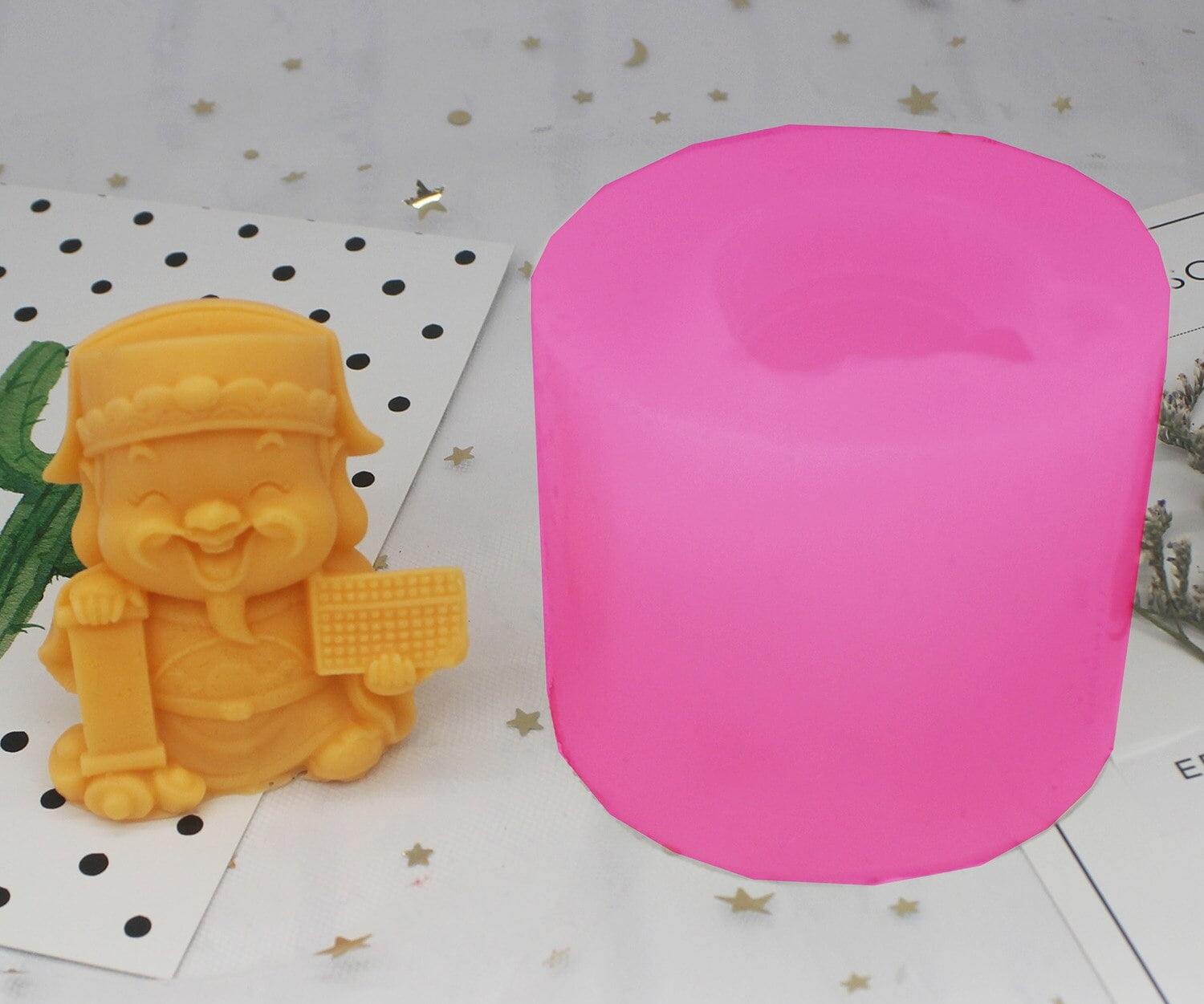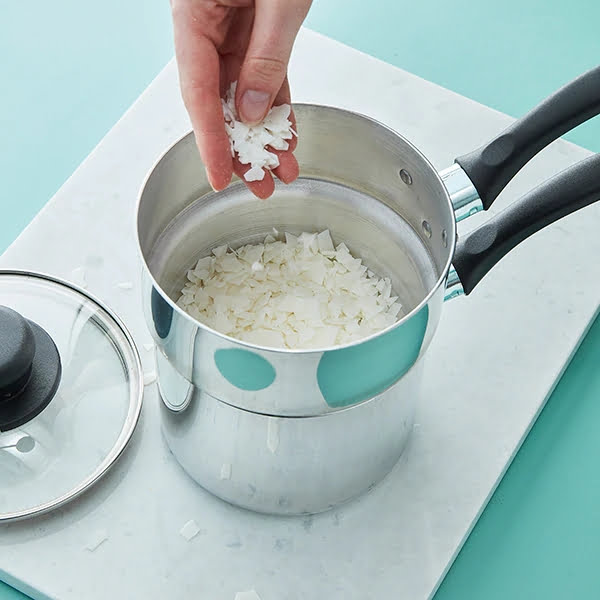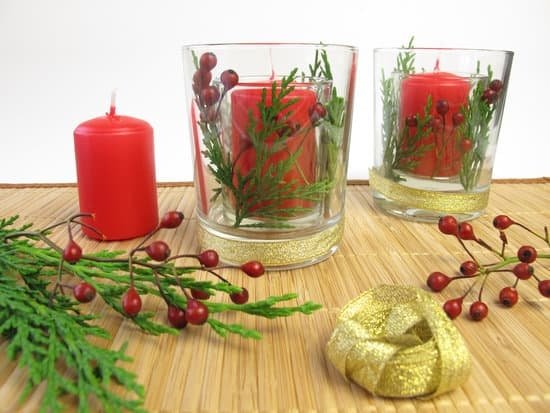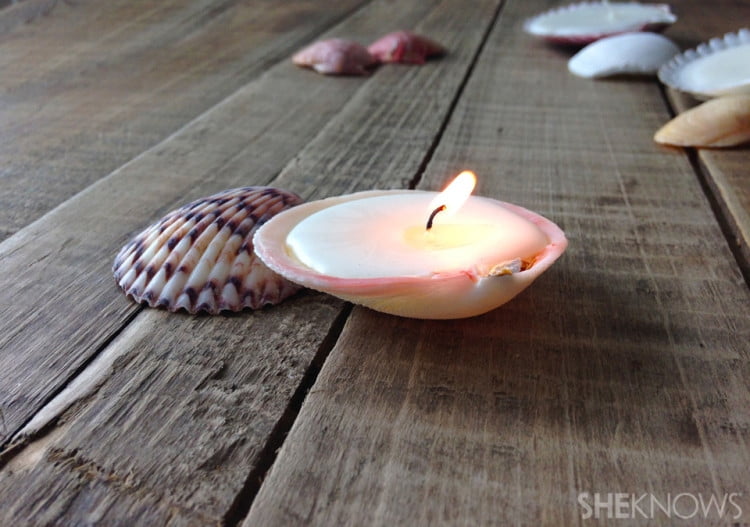Candle making has become increasingly popular in recent years, whether as a creative hobby or as a business venture. With an array of candle making supplies and techniques available, enthusiasts are constantly seeking ways to elevate their craft. One question that frequently arises is: Can you use fragrance oil for candle making? In this article, we will delve into the possibilities and considerations of incorporating fragrance oils into the candle making process.
Before we can determine whether fragrance oils can be used in candle making, it is important to understand what exactly fragrance oils are and how they differ from essential oils. Unlike essential oils, which are derived from natural sources such as plants and have therapeutic properties, fragrance oils are synthetic compounds crafted specifically to mimic scents. While this synthetic nature may raise questions about their quality and safety, fragrance oils offer unique advantages in terms of variety, affordability, and consistency.
While fragrance oils offer numerous benefits in candle making, there are also potential drawbacks to consider. The synthetic nature of these oils means that some individuals may find them less appealing than natural scents provided by essential oils. There is also the possibility of allergens present in fragrance oils causing sensitivities or irritations for certain individuals. Additionally, compatibility issues with certain waxes can affect the overall performance of the scent in the finished candle.
When deciding whether to use fragrance oils for candle making, there are several factors that should be taken into consideration. These include the intended use of the candles, the type of wax being used, the desired intensity of scent throw, and the overall quality of the fragrance oil itself. By carefully considering these factors and selecting high-quality fragrance oils suited to personal preferences, DIY candle makers can create beautifully scented candles that perfectly suit their needs.
Understanding Fragrance Oils
Fragrance oils are synthetic oils that are specifically formulated to create aromatic scents. Unlike essential oils, which are derived from natural plant sources through processes like steam distillation or cold pressing, fragrance oils are chemically engineered to mimic specific scents. They are commonly used in various industries including perfumery, bath and body products, and of course, candle making.
One of the key differences between fragrance oils and essential oils lies in their sourcing. Essential oils come directly from plants and retain their natural characteristics, including their therapeutic properties. On the other hand, fragrance oils are created in a laboratory using a combination of aromatic compounds and synthetic substances. This means that while essential oils offer more holistic benefits, fragrance oils provide a wider range of scent options.
Another difference lies in the characteristics and uses of these two types of oils. Essential oils tend to have stronger scent profiles compared to fragrance oils, requiring only a small amount for a noticeable aroma. Additionally, essential oils have therapeutic benefits such as relaxation or stress relief.
Fragrance oils, on the other hand, offer an extensive variety of scents due to their synthetic nature. They can also be more affordable than essential oils, making them an appealing choice for candle makers looking for cost-effective options.
While fragrance oils present several advantages in candle making, it is important to consider some potential drawbacks. One significant aspect is the synthetic scent of fragrance oils. Some individuals prefer the natural aromas of essential oils over the artificial fragrances offered by fragrance oils. Additionally, fragrance oil blends may contain potential allergens that could trigger sensitivities or reactions in certain individuals.
Compatibility with certain waxes can also be a factor to consider when using fragrance oils in candle making. Some waxes may not blend well with certain types of fragrance oil, resulting in poor scent throw or even causing the candles not to burn properly. It is crucial to test the compatibility of fragrance oils with your chosen wax before committing to a larger batch of candles.
In summary, fragrance oils are synthetic oils specifically formulated for creating aromatic scents in various products, including candles. They differ from essential oils in terms of sourcing, characteristics, and uses. Fragrance oils offer an extensive variety of scents and are more affordable compared to essential oils. However, their synthetic nature and potential allergens should be taken into consideration, as well as ensuring compatibility with the chosen wax.
Pros and Cons of Fragrance Oils in Candle Making
When it comes to candle making, the use of fragrance oils has become increasingly popular among hobbyists and business owners alike. Fragrance oils offer a wide variety of scents, affordability, and consistency that make them a desirable choice for many candle makers. However, there are also potential drawbacks to consider when using fragrance oils. In this section, we will explore the pros and cons of fragrance oils in candle making.
Advantages of Using Fragrance Oils
One of the biggest advantages of using fragrance oils in candle making is the vast range of options available. Fragrance oils come in a wide variety of scents, from floral to fruity to seasonal fragrances. This allows candle makers to have endless creative possibilities and cater to different preferences.
Another advantage is affordability. Compared to essential oils, which can be quite expensive due to their natural sourcing process, fragrance oils are typically more budget-friendly. This makes them accessible for beginners or those looking to create candles on a larger scale.
Consistency is also an important factor when it comes to fragrance oils. Unlike essential oils, which may vary in scent from batch to batch depending on factors like weather conditions during plant growth or extraction methods used, fragrance oils offer consistent results every time they are used. This ensures that candles created with fragrance oils will have the same scent throughout their entire burn time.
Potential Drawbacks of Using Fragrance Oils
One potential drawback of fragrance oils is their synthetic nature. Unlike essential oils that are derived directly from plants, fragrance oils are mainly synthetically produced and may not provide the same natural aromas as essential oils. Some people prefer the authenticity and purity that essential oils offer for their candles.
Additionally, some individuals may have sensitivity or allergies to certain synthetic components found in fragrance oils. It’s important for candle makers to be aware of potential allergens present in their chosen fragrance oil and take necessary precautions.
Compatibility issues can also arise when using fragrance oils in candle making. Certain waxes may not hold the scent of fragrance oils as well as others, resulting in a weaker or shorter-lived fragrance throw. It’s essential to choose a wax type that is compatible with the fragrance oil being used, ensuring optimal scent distribution in the candles.
Factors to Consider When Choosing Fragrance Oils for Candle Making
When it comes to choosing fragrance oils for candle making, there are several important factors to consider. The right fragrance oil can significantly impact the scent, burn quality, and overall appeal of your candles. Here are some key factors to keep in mind when selecting fragrance oils for your candle making project:
- Intended Use: Consider the purpose of your candles and the environment in which they will be used. Are you creating candles for relaxation or a special occasion? Will they be used indoors or outdoors? The intended use can help guide you towards appropriate fragrance choices.
- Wax Type: Different waxes have different compatibility with fragrance oils. For example, soy wax tends to work well with a wide range of fragrances, while paraffin wax may require higher fragrance load percentages for a stronger scent throw.
- Fragrance Load: The amount of fragrance oil that can be safely added to a candle is known as the fragrance load. This percentage varies based on wax type and personal preference. Be sure to follow guidelines provided by the manufacturer and conduct small test batches to determine the optimal fragrance load for your chosen wax.
- Fragrance Oil Quality: Not all fragrance oils are created equal. Look for high-quality fragrance oils that are specifically formulated for candle making. These oils tend to have better performance in terms of scent throw and longevity.
- Personal Preferences: Ultimately, your personal preferences play a significant role in selecting fragrance oils for candle making. Consider the scents you enjoy or those that align with the theme or purpose of your candles. Experiment with different combinations and take note of customer feedback or personal satisfaction.
By considering these factors when choosing fragrance oils for candle making, you can ensure that your candles will delight customers or create a soothing atmosphere in your own space. Remember to source high-quality oils, adhere to safety guidelines, and experiment with various scents to create truly unique and personalized candles.
Fragrance Oil Safety Measures for Candle Making
Fragrance oils are a popular choice for candle making due to their wide range of scents and affordable price points. However, it is essential to prioritize safety when using fragrance oils in the candle making process. This section will discuss the importance of following safety measures and provide an explanation of potential risks associated with fragrance oils.
Safety should always be the top priority when working with any type of fragrance oil. It is important to remember that fragrance oils are synthetic and can contain potentially harmful chemicals. These chemicals have the potential to cause skin irritations or allergic reactions if proper precautions are not taken.
One potential risk when working with fragrance oils is the release of toxic fumes during the heating process. To avoid inhalation of these fumes, it is crucial to work in a well-ventilated area or use proper ventilation equipment such as a fume hood or mask. Additionally, it is recommended to wear protective gloves when handling fragrance oils to minimize contact with skin.
In order to ensure safe usage, it is also important to educate yourself on proper usage precautions for each specific fragrance oil. Some fragrance oils may have higher usage rates than others, so it is essential to familiarize yourself with recommended guidelines provided by the manufacturer. Following these guidelines will help you enjoy candle making while minimizing any potential risks associated with fragrance oil usage.
By prioritizing safety and following these measures, candle makers can fully enjoy the process of working with fragrance oils without compromising their health or well-being.
How to Properly Incorporate Fragrance Oils into Candle Making Process
Fragrance oils are a popular choice for candle making enthusiasts, as they offer a wide variety of scents and are often more affordable than essential oils. In this section, we will discuss how to properly incorporate fragrance oils into the candle making process for optimal scent distribution.
When it comes to adding fragrance oils to your candles, timing is everything. The ideal time to add fragrance oil is when the wax has reached its melting point and is just starting to cool down. This allows the oil to mix into the wax thoroughly while preventing any potential issues with overheating or evaporation.
To incorporate fragrance oils into your candles, you will need the following equipment:
- A double boiler or a pouring pitcher.
- A thermometer.
- Fragrance oil (the recommended percentage should be indicated by the supplier).
- Stirring utensil (preferably made of silicone or stainless steel).
Here is a step-by-step guide on incorporating fragrance oils into your candle making process:
- Start by melting your wax in a double boiler or a pouring pitcher over low heat. Monitor the temperature using a thermometer until it reaches the desired melting point.
- Once the wax has melted, remove it from heat and let it cool slightly. It should be around 180-185°F (82-85°C) before adding fragrance oil.
- Add your fragrance oil at the recommended percentage provided by the supplier. For example, if the supplier recommends using 10% fragrance load, add 1 ounce of fragrance oil per pound of wax.
- Stir the mixture gently but thoroughly for about two minutes, ensuring that the fragrance oil is evenly distributed throughout the wax.
- Carefully pour the scented wax into your chosen containers or molds, avoiding any splashes or spills.
- Allow your candles to cool and set completely before trimming wicks and enjoying their beautiful aroma.
It’s important to note that different fragrances may require slight adjustments in the percentage of fragrance oil used. You can experiment with different percentages to achieve your desired scent intensity, but make sure not to exceed the recommended load to avoid any potential issues with candle performance.
Incorporating fragrance oils into the candle making process allows you to unleash your creativity and personalize your candles with unique scents. By following these steps and taking care with measurements, you can create beautifully scented candles that will delight both yourself and others.
| Equipment | Materials |
|---|---|
| A double boiler or a pouring pitcher | Fragrance oil (recommended percentage) |
| A thermometer | Candle wax |
| Stirring utensil (preferably made of silicone or stainless steel) | Candle containers or molds |
Popular Fragrance Oils for Candle Making and Their Unique Characteristics
When it comes to candle making, one of the most exciting aspects is choosing the perfect fragrance oil. Fragrance oils offer an extensive range of scents that can bring different moods and atmospheres into any space. In this section, we will explore some popular fragrance oils for candle making and their unique characteristics.
- Floral Scents: Floral fragrances are timeless classics in candle making. They bring a sense of elegance and nature into any room. Some popular floral fragrance oils include rose, lavender, jasmine, and lily of the valley. These scents are known for their calming properties and are often used in relaxation candles or as part of a spa-like experience.
- Fruity Scents: If you’re looking to add a vibrant and lively touch to your candles, fruity fragrances are a great choice. Options like citrus, apple, mango, or strawberry can create a refreshing and uplifting ambiance. These scents work well in kitchens or areas where you want to create an inviting environment.
- Woody Scents: For those who prefer earthy and warm aromas, woody fragrance oils are ideal. Cedarwood, sandalwood, or patchouli can add a cozy and grounding feel to your candles. These scents are often used during colder months or in spaces where you want to create a sense of intimacy.
- Seasonal Scents: Seasonal fragrance oils allow you to capture the essence of different times of the year through your candles. Whether it’s the spiciness of cinnamon during the holidays or the freshness of ocean breeze in summer, seasonal scents add a touch of nostalgia and help set the mood for special occasions.
| Fragrance | Unique Characteristics |
|---|---|
| Rose | Classic, romantic, and soothing |
| Lavender | Relaxing, calming, and floral |
| Citrus | Energizing, refreshing, and fruity |
| Sandalwood | Warm, earthy, and grounding |
| Cinnamon | Spicy, festive, and inviting during the holidays |
Remember that fragrance oils can vary in terms of intensity and performance depending on the manufacturer or supplier. It’s always a good idea to test small batches before committing to larger quantities. Additionally, consider the scent throw and compatibility with your chosen candle wax to ensure optimal results. With a vast array of fragrance options available, there’s no limit to what you can create in your candle making journey.
Now that we have explored popular fragrance oils for candle making and their unique characteristics, it’s time to move on to troubleshooting tips and solutions for fragrance oil challenges. Stay tuned for expert advice on enhancing fragrance performance in your candles.
Troubleshooting Tips and Solutions for Fragrance Oil Challenges
When it comes to candle making with fragrance oils, there are a few common challenges that may arise. However, with the right troubleshooting tips and solutions, you can overcome these obstacles and achieve optimal fragrance performance in your candles. Here are some helpful suggestions to address these issues:
- Fragrance Fading: If you notice that the scent of your candles is fading over time, there are a few things you can try. First, make sure you are using high-quality fragrance oils from reputable suppliers. Lower-quality oils may lose their scent faster.
Additionally, consider increasing the fragrance load in your candles by adding a higher percentage of fragrance oil to your wax. Experimenting with different percentages can help you find the perfect balance for a strong and long-lasting scent. - Uneven Scent Throw: Sometimes, you may experience inconsistent scent throw throughout your candle’s burn time. To solve this issue, ensure that you are mixing your fragrance oil thoroughly and evenly into the melted wax before pouring it into the container or mold.
Uneven distribution of fragrance oil can lead to inconsistencies in scent throw. You can also try using a different type of wax that enhances fragrance dispersion or melting the wax at a slightly higher temperature to help disperse the fragrance more evenly. - Wax Compatibility Problems: Certain fragrances may not perform well with specific types of wax due to differences in chemical composition or melting points. If you encounter compatibility issues between your chosen fragrance oil and wax, consider testing different combinations to find one that works best together. You may also want to consult resources or reach out to experienced candle makers for recommendations on compatible pairings.
Remember, troubleshooting is all about experimentation and finding what works best for your specific setup and preferences. Don’t be afraid to try new techniques or adjust variables until you achieve the desired results.
Incorporating fragrance oils into your candle making process allows you to unlock an array of scents, enhancing the overall experience for yourself and others. By understanding and addressing these common challenges, you can ensure that your candles not only look beautiful but also fill the room with captivating aromas.
Conclusion
In conclusion, fragrance oils offer an exciting opportunity for candle makers to explore their creativity and create unique, personalized candles. Throughout this article, we have discussed the differences between fragrance oils and essential oils, weighed the pros and cons of using fragrance oils in candle making, and provided tips on selecting suitable fragrance oils based on individual preferences and desired outcomes.
One of the major advantages of using fragrance oils is the wide variety of scents available. Whether you prefer floral, fruity, woody, or seasonal fragrances, there are countless options to choose from. Additionally, fragrance oils tend to be more affordable than essential oils and offer consistent scent performance in candles.
However, it is important to consider potential drawbacks when using fragrance oils. Some people may prefer natural scents found in essential oils over synthetic fragrances. It is also crucial to be mindful of potential allergens and compatibility issues with certain waxes.
To ensure safe usage of fragrance oils in candle making, it is important to follow safety guidelines such as wearing gloves, avoiding direct skin contact with concentrated oil, and working in a well-ventilated area. By incorporating fragrance oils into the candle-making process properly – adding them at specific stages and using recommended percentages – you can achieve optimal fragrance distribution.
In summary, embracing the art of candle making with fragrance oils allows you to unleash your creativity and craft candles that reflect your unique style and taste. Experiment with different scents, combinations, and techniques to create candles that evoke a specific mood or capture special memories. With proper knowledge and precautions in place, using fragrance oils can elevate your candle-making experience and result in beautiful candles that will delight yourself and others.

Welcome to my candle making blog! In this blog, I will be sharing my tips and tricks for making candles. I will also be sharing some of my favorite recipes.





